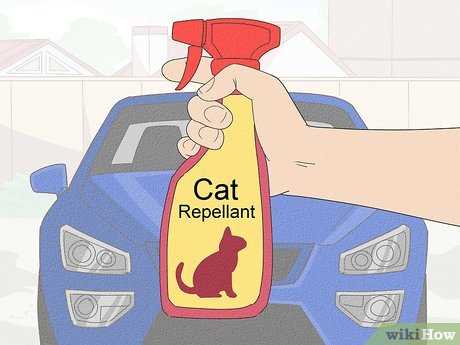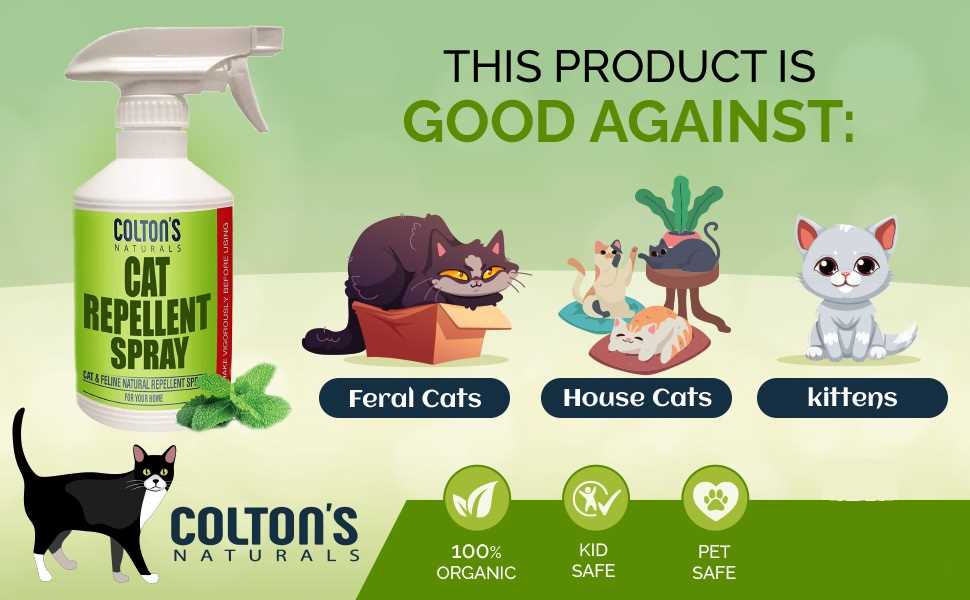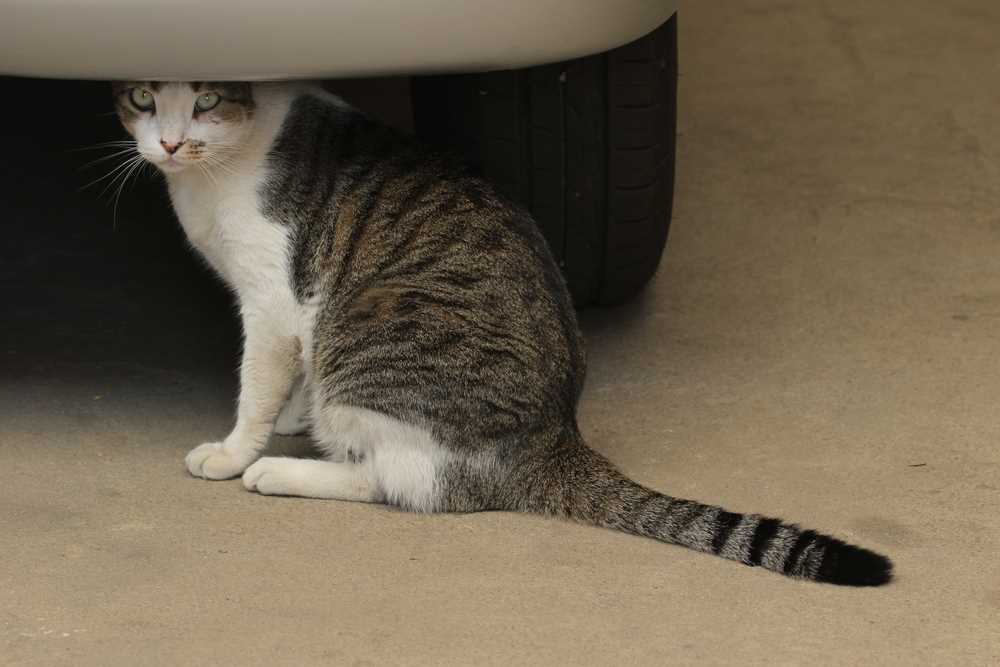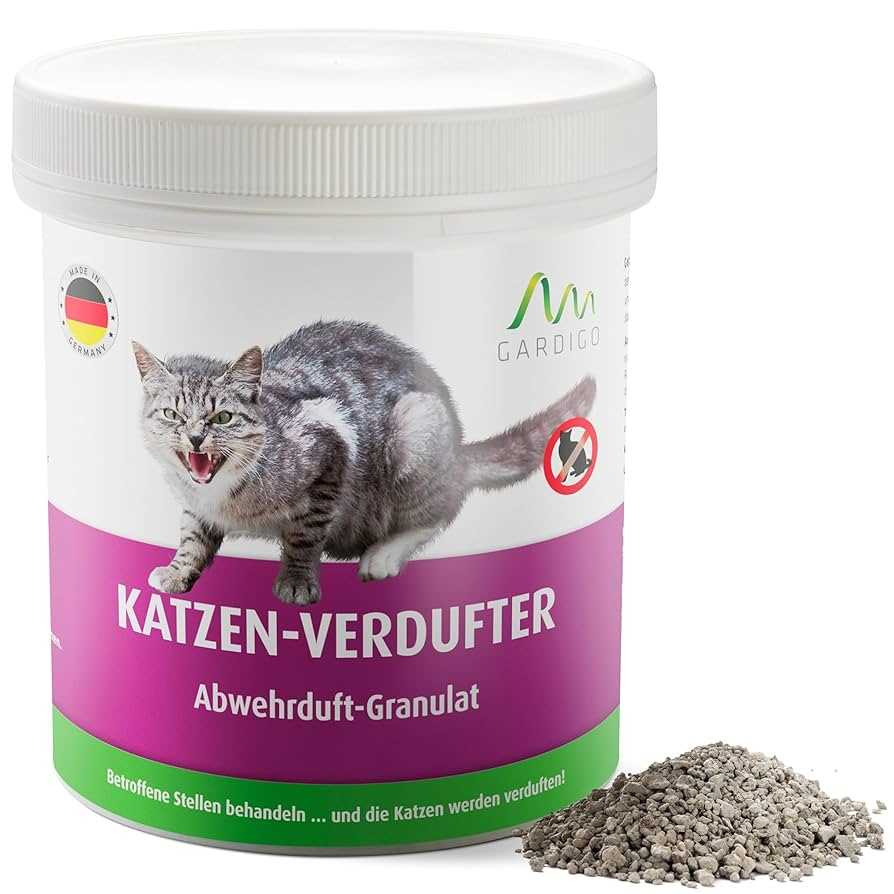



Blocking access to certain areas is key. One effective method is sealing any openings or gaps larger than a quarter-inch. This includes door frames, windows, and vents. Use weather stripping or caulk to ensure those sneaky little furballs can’t squeeze through.
Consider installing a sturdy door with a secure latch. A well-fitted door not only deters entry but also adds a layer of safety for tools and equipment stored inside. Make sure it closes tightly and check for any spaces that might allow a curious whiskered explorer to slip in.
Utilizing repellents can also prove beneficial. Citrus scents, vinegar, and certain commercial sprays can deter unwanted visits. Spraying these solutions around entry points sends a clear message that certain areas are off-limits.
Creating distractions elsewhere can also help. Setting up cozy spaces or feeding areas away from restricted zones can redirect attention. Providing engaging toys and scratching posts will keep playful paws busy and away from restricted locations.
Regularly monitoring the area is essential. Keep an eye out for any signs of attempts to gain entry. This proactive approach allows for immediate adjustments and reinforces boundaries effectively.
Strategies to Deter Felines from the Workspace

Installing a sturdy barrier is the most straightforward solution. Use heavy-duty screens or wooden boards to seal entry points.
Utilizing scents that are unpleasant to felines can be effective. Citrus oils or vinegar sprayed around the entrance can repel them.
Consider motion-activated devices that emit sounds or sprays. These can startle unwelcome visitors without causing harm.
Maintain cleanliness. Removing food sources and potential nesting materials will make the area less inviting.
- Seal any access points, including gaps under doors.
- Regularly check for open windows and doors.
- Store items in sealed containers to avoid attracting attention.
Employing noise deterrents, such as wind chimes or aluminum foil, can also discourage their presence.
- Install a cat door specifically designed to allow only certain animals.
- Utilize natural deterrents like rosemary or lavender plants around the perimeter.
Lastly, consider adopting a friendly dog or utilizing a neighborhood cat that helps mark the territory, creating an unwelcoming space for intruders.
Implement Physical Barriers to Block Access

Use sturdy materials such as plywood or metal sheeting to seal gaps and openings. This prevents sneaky entries through small spaces. A strong door with a tight seal is also a must. Consider adding a secondary barrier, like a screen door, for extra protection.
Install a fence around the area, ensuring it’s tall enough to deter jumping. A fence with an inward angle at the top can be effective. Also, use concrete blocks or bricks to create a barrier at the base of the fence, making it harder to dig under.
Use motion-activated devices that release a harmless spray or sound when movement is detected. This can discourage any adventurous felines from approaching. Additionally, placing heavy objects near entry points can physically block access.
Regularly check for new openings and repair them immediately. Keeping a watchful eye on the structure will help ensure it remains secure. Using these methods can create a more controlled environment and maintain your space free from uninvited visitors.
Utilize Repellent Scents and Products
To deter unwanted furry visitors, consider using citrus-based sprays. Cats dislike the scent of oranges and lemons. Mix water with a few drops of citrus essential oil and spray around entry points.
Natural Repellents

Vinegar is another effective option. Its strong odor can discourage intruders. Create a solution with equal parts vinegar and water, applying it near potential access points.
Commercial Products
Various pet-safe repellent sprays are available in stores. Look for those labeled as cat deterrents, ensuring they are safe for use around your home. Apply these products regularly for best results.
| Repellent Type | Application Method | Frequency |
|---|---|---|
| Citrus Spray | Spray near entry points | Every few days |
| Vinegar Solution | Wipe surfaces | Weekly |
| Commercial Spray | Spray as directed | As needed |
Maintain a Clean and Uninviting Environment

Regularly remove food sources by keeping all snacks sealed and stored away. Make sure to dispose of any garbage promptly. A tidy space is less appealing to unwanted visitors.
Clear out clutter that may provide hiding spots. If a space is organized, it discourages animals from feeling safe and comfortable.
Consider using airtight containers for any items that might attract attention, such as pet food or gardening supplies. This helps eliminate potential temptation.
Regularly clean surfaces and areas where odors may accumulate. A fresh environment is unappealing to those seeking a cozy hideaway.
Utilize natural deterrents like citrus peels or vinegar. They are known to repel many critters, making the area less inviting without harsh chemicals.
For additional insights on what animals can consume, check out this link: can cats eat flour tortillas.
Video:
Blocking access to certain areas is key. One effective method is sealing any openings or gaps larger than a quarter-inch. This includes door frames, windows, and vents. Use weather stripping or caulk to ensure those sneaky little furballs can’t squeeze through.
Consider installing a sturdy door with a secure latch. A well-fitted door not only deters entry but also adds a layer of safety for tools and equipment stored inside. Make sure it closes tightly and check for any spaces that might allow a curious whiskered explorer to slip in.
Utilizing repellents can also prove beneficial. Citrus scents, vinegar, and certain commercial sprays can deter unwanted visits. Spraying these solutions around entry points sends a clear message that certain areas are off-limits.
Creating distractions elsewhere can also help. Setting up cozy spaces or feeding areas away from restricted zones can redirect attention. Providing engaging toys and scratching posts will keep playful paws busy and away from restricted locations.
Regularly monitoring the area is essential. Keep an eye out for any signs of attempts to gain entry. This proactive approach allows for immediate adjustments and reinforces boundaries effectively.
Strategies to Deter Felines from the Workspace

Installing a sturdy barrier is the most straightforward solution. Use heavy-duty screens or wooden boards to seal entry points.
Utilizing scents that are unpleasant to felines can be effective. Citrus oils or vinegar sprayed around the entrance can repel them.
Consider motion-activated devices that emit sounds or sprays. These can startle unwelcome visitors without causing harm.
Maintain cleanliness. Removing food sources and potential nesting materials will make the area less inviting.
- Seal any access points, including gaps under doors.
- Regularly check for open windows and doors.
- Store items in sealed containers to avoid attracting attention.
Employing noise deterrents, such as wind chimes or aluminum foil, can also discourage their presence.
- Install a cat door specifically designed to allow only certain animals.
- Utilize natural deterrents like rosemary or lavender plants around the perimeter.
Lastly, consider adopting a friendly dog or utilizing a neighborhood cat that helps mark the territory, creating an unwelcoming space for intruders.
Implement Physical Barriers to Block Access

Use sturdy materials such as plywood or metal sheeting to seal gaps and openings. This prevents sneaky entries through small spaces. A strong door with a tight seal is also a must. Consider adding a secondary barrier, like a screen door, for extra protection.
Install a fence around the area, ensuring it’s tall enough to deter jumping. A fence with an inward angle at the top can be effective. Also, use concrete blocks or bricks to create a barrier at the base of the fence, making it harder to dig under.
Use motion-activated devices that release a harmless spray or sound when movement is detected. This can discourage any adventurous felines from approaching. Additionally, placing heavy objects near entry points can physically block access.
Regularly check for new openings and repair them immediately. Keeping a watchful eye on the structure will help ensure it remains secure. Using these methods can create a more controlled environment and maintain your space free from uninvited visitors.
Utilize Repellent Scents and Products
To deter unwanted furry visitors, consider using citrus-based sprays. Cats dislike the scent of oranges and lemons. Mix water with a few drops of citrus essential oil and spray around entry points.
Natural Repellents

Vinegar is another effective option. Its strong odor can discourage intruders. Create a solution with equal parts vinegar and water, applying it near potential access points.
Commercial Products
Various pet-safe repellent sprays are available in stores. Look for those labeled as cat deterrents, ensuring they are safe for use around your home. Apply these products regularly for best results.
| Repellent Type | Application Method | Frequency |
|---|---|---|
| Citrus Spray | Spray near entry points | Every few days |
| Vinegar Solution | Wipe surfaces | Weekly |
| Commercial Spray | Spray as directed | As needed |
Maintain a Clean and Uninviting Environment

Regularly remove food sources by keeping all snacks sealed and stored away. Make sure to dispose of any garbage promptly. A tidy space is less appealing to unwanted visitors.
Clear out clutter that may provide hiding spots. If a space is organized, it discourages animals from feeling safe and comfortable.
Consider using airtight containers for any items that might attract attention, such as pet food or gardening supplies. This helps eliminate potential temptation.
Regularly clean surfaces and areas where odors may accumulate. A fresh environment is unappealing to those seeking a cozy hideaway.
Utilize natural deterrents like citrus peels or vinegar. They are known to repel many critters, making the area less inviting without harsh chemicals.
For additional insights on what animals can consume, check out this link: can cats eat flour tortillas.
Video:
Blocking access to certain areas is key. One effective method is sealing any openings or gaps larger than a quarter-inch. This includes door frames, windows, and vents. Use weather stripping or caulk to ensure those sneaky little furballs can’t squeeze through.
Consider installing a sturdy door with a secure latch. A well-fitted door not only deters entry but also adds a layer of safety for tools and equipment stored inside. Make sure it closes tightly and check for any spaces that might allow a curious whiskered explorer to slip in.
Utilizing repellents can also prove beneficial. Citrus scents, vinegar, and certain commercial sprays can deter unwanted visits. Spraying these solutions around entry points sends a clear message that certain areas are off-limits.
Creating distractions elsewhere can also help. Setting up cozy spaces or feeding areas away from restricted zones can redirect attention. Providing engaging toys and scratching posts will keep playful paws busy and away from restricted locations.
Regularly monitoring the area is essential. Keep an eye out for any signs of attempts to gain entry. This proactive approach allows for immediate adjustments and reinforces boundaries effectively.
Strategies to Deter Felines from the Workspace

Installing a sturdy barrier is the most straightforward solution. Use heavy-duty screens or wooden boards to seal entry points.
Utilizing scents that are unpleasant to felines can be effective. Citrus oils or vinegar sprayed around the entrance can repel them.
Consider motion-activated devices that emit sounds or sprays. These can startle unwelcome visitors without causing harm.
Maintain cleanliness. Removing food sources and potential nesting materials will make the area less inviting.
- Seal any access points, including gaps under doors.
- Regularly check for open windows and doors.
- Store items in sealed containers to avoid attracting attention.
Employing noise deterrents, such as wind chimes or aluminum foil, can also discourage their presence.
- Install a cat door specifically designed to allow only certain animals.
- Utilize natural deterrents like rosemary or lavender plants around the perimeter.
Lastly, consider adopting a friendly dog or utilizing a neighborhood cat that helps mark the territory, creating an unwelcoming space for intruders.
Implement Physical Barriers to Block Access

Use sturdy materials such as plywood or metal sheeting to seal gaps and openings. This prevents sneaky entries through small spaces. A strong door with a tight seal is also a must. Consider adding a secondary barrier, like a screen door, for extra protection.
Install a fence around the area, ensuring it’s tall enough to deter jumping. A fence with an inward angle at the top can be effective. Also, use concrete blocks or bricks to create a barrier at the base of the fence, making it harder to dig under.
Use motion-activated devices that release a harmless spray or sound when movement is detected. This can discourage any adventurous felines from approaching. Additionally, placing heavy objects near entry points can physically block access.
Regularly check for new openings and repair them immediately. Keeping a watchful eye on the structure will help ensure it remains secure. Using these methods can create a more controlled environment and maintain your space free from uninvited visitors.
Utilize Repellent Scents and Products
To deter unwanted furry visitors, consider using citrus-based sprays. Cats dislike the scent of oranges and lemons. Mix water with a few drops of citrus essential oil and spray around entry points.
Natural Repellents

Vinegar is another effective option. Its strong odor can discourage intruders. Create a solution with equal parts vinegar and water, applying it near potential access points.
Commercial Products
Various pet-safe repellent sprays are available in stores. Look for those labeled as cat deterrents, ensuring they are safe for use around your home. Apply these products regularly for best results.
| Repellent Type | Application Method | Frequency |
|---|---|---|
| Citrus Spray | Spray near entry points | Every few days |
| Vinegar Solution | Wipe surfaces | Weekly |
| Commercial Spray | Spray as directed | As needed |
Maintain a Clean and Uninviting Environment

Regularly remove food sources by keeping all snacks sealed and stored away. Make sure to dispose of any garbage promptly. A tidy space is less appealing to unwanted visitors.
Clear out clutter that may provide hiding spots. If a space is organized, it discourages animals from feeling safe and comfortable.
Consider using airtight containers for any items that might attract attention, such as pet food or gardening supplies. This helps eliminate potential temptation.
Regularly clean surfaces and areas where odors may accumulate. A fresh environment is unappealing to those seeking a cozy hideaway.
Utilize natural deterrents like citrus peels or vinegar. They are known to repel many critters, making the area less inviting without harsh chemicals.
For additional insights on what animals can consume, check out this link: can cats eat flour tortillas.











